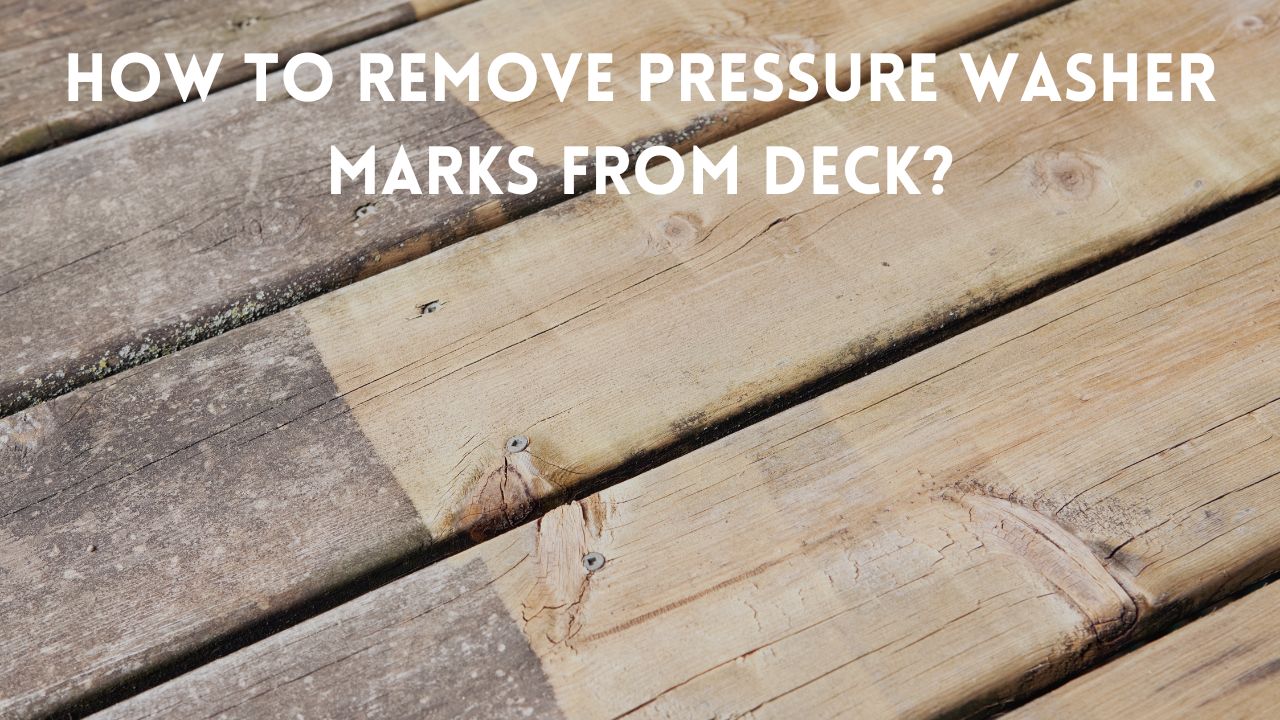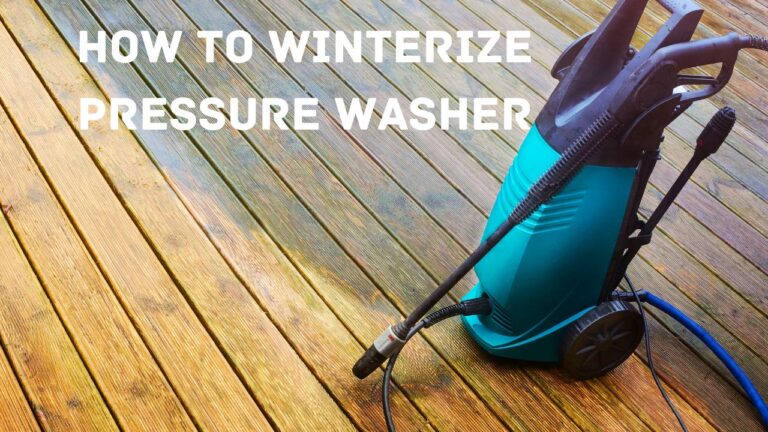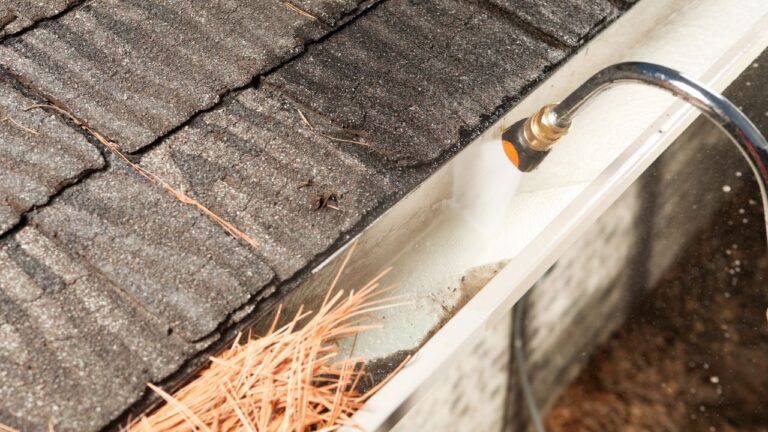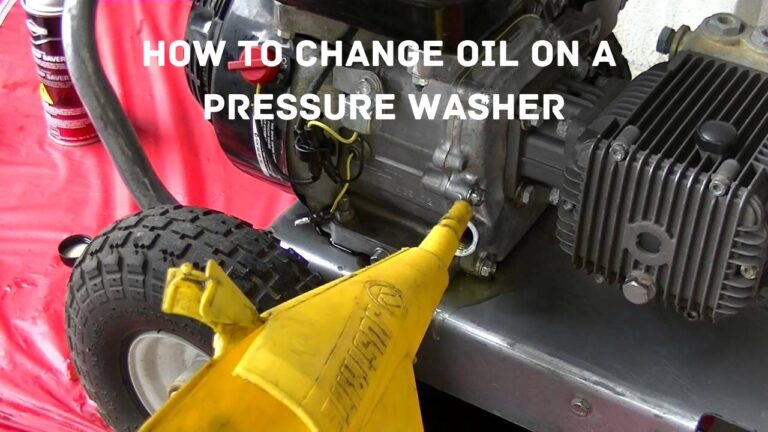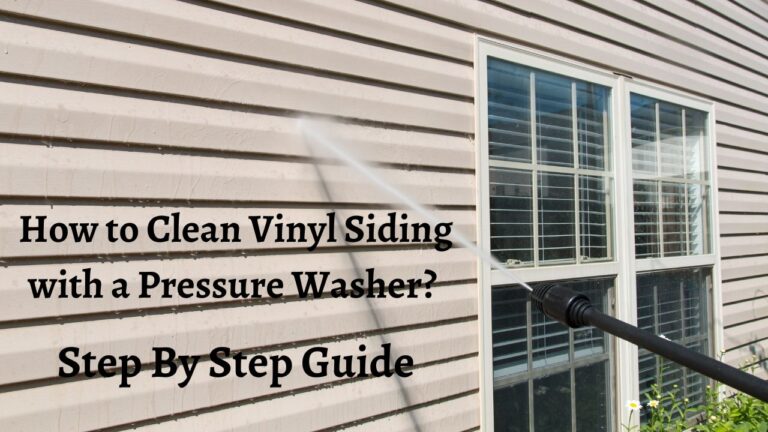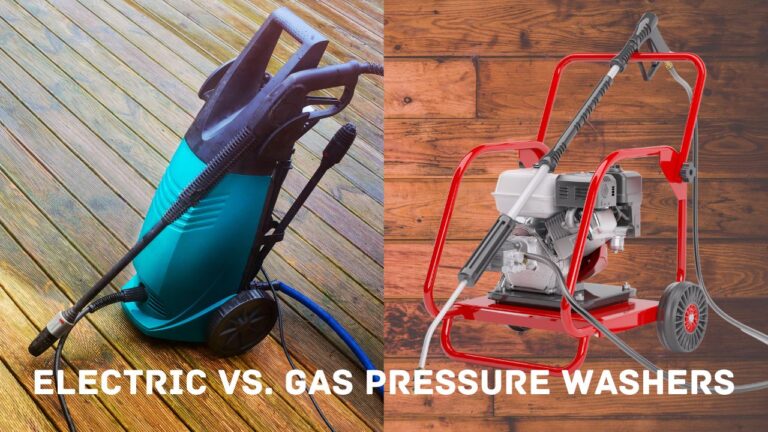How to Remove Pressure Washer Marks From Deck?
Pressure washers are every bit as resourceful as they can be. You can use them for various purposes, including washing cars, grills, sidings, furniture, fences, and decking.
However, while they are a perfect DIY tool, they can leave some marks on your decking.
Even though you might be employing the best practices – for example, maintaining a lower PSI while washing – you are bound to face these marks sooner or, preferably, later when the decking has admirably withstood the trials of time.
Regardless, you will want to know these techniques to remove pressure washer marks from decks and restore them to their former glory.
Ahead, we will discuss sanding, staining, and using filler to restore wooden decks. We will also discuss acid washing for concrete decks. So, read on ahead to learn more.
How To Remove Pressure Washer Marks From Wood Decks
Decks, whether wood or concrete, bring a familiar appeal to your home. You can host outside parties or cozy up on a cold winter day here, or both!

However, if the decks have marks from a pressure washer, they will look damaged, old, or simply dirty, even though you just washed them.
And the next thing you know, you’d unconsciously be looking for every reason to go out there. So, here are some of the steps you can take to remove pressure washer marks from decks.
Read More
How To Clean Wood Deck Without Pressure Washer
Start By Recognizing The Wood And Damage Types
Knowing about both is crucial as it would affect how you treat and repair your deck boards. You can prevent pressure washer marks, in the first place, just by knowing the type of wood.
A recommended pressure washer PSI for washing wood is 1500 to 2000. You’d want to stick to a lower PSI if it is a softwood deck made of pine or cedar. Hardwoods, such as oak or cherry, can withstand somewhat higher PSI.
Now, it’s always better to be safer than sorry, stick with lower PSI, and hold the wand at an angle to prevent marks. Otherwise, the wood might warp and splinter, leaving behind unsightly stains.
If that happens, your deck treatment options are to start with sanding or, in the worst case, replace the boards completely.
Sanding The Wooden Decks
Sanding wooden decks serves various purposes, such as removing splinters that might interfere when applying stain cover or sealant.

However, sanding primarily aims to smooth out the raised or rough surfaces on the wooden deck. The fibers of the deck can become raised or damaged over time due to pressure washing or when the water flow is concentrated in a small area for longer durations.
Sanding will help fix these issues and will remove pressure washer marks. Here are some tips to keep in mind while sanding wooden decks:
- First, use a stiff scrub brush to remove splintered pieces and loose dirt or debris.
- You can use a vacuum cleaner to ensure there are no unwelcome leftovers on your deck.
- Use 80-grit sandpaper to have a coarser finish on your board. You can work your way up to 120- or 150-grit paper for a finer finish.
- 220-grit papers are also commonly used to gently abrade the surface of the wood and remove any rough surfaces.
- You can use 320-grit sandpaper for a second pass for a smoother surface.
If your board has cracks or cavities, use a wood filler before applying the stain cover.
Stain the Deck
Now, the answer to: will stain cover pressure washer marks depends on how well you have prepared the deck and what stain cover you are using.
Sanding the deck will take care of the former part. And as for the latter, a quality oil-based stain will work best to revitalize your deck. These are mostly made from an alkyd resin base and synthetic pigments to recreate the natural shine and color the wood once had.
You can use a brush or a roller to apply the stain. Sprayers are also available; here’s how you can apply using the sprayer:
- Fill the sprayer with stain and then test the sprayer on a scrap piece of wood.
- Set a lower PSI – around 800 PSI.
- Start rinsing from one end and make your way to the other end.
- Keep the nozzle at the same distance to maintain an even spray.
- Avoid applying too much stain in one area to prevent drips or runs.
- You can use the brightener, too, after spraying the stain cover.
- Let the stain dry according to the instructions from the manufacturer.
- Apply a second coat if desired. You can also wait up to 24 hours to decide if the deck needs a second coat.
Applying A Wood Filler
In case the deck has crevices, cracks, and holes, you should apply a wood filler to even the board. Here’s how you can do it.
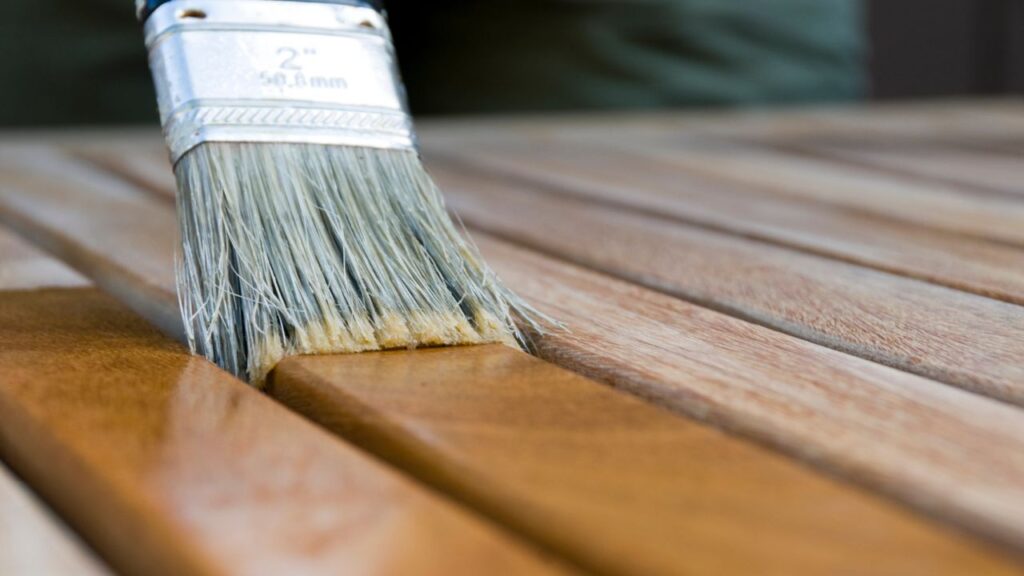
- Prepare the surface by scraping, sanding, cleaning, etc.
- Prepare the filler according to the manufacturer’s instructions. It should be a thick paste.
- Apply the filler with the help of a putty knife. It is okay to overfill the area slightly.
- Now, smooth the surface with the help of a sanding block or a damp cloth. As the filler is still wet, do not apply too much pressure as it may cause the filler to crack.
- Let the filler dry by leaving it for several hours to overnight.
- Sand the deck.
- Apply the stain or sealant.
Concrete Decks – How To Remove Pressure Washer Marks
Like wooden decks, concrete decks are susceptible to pressure washer marks. And similarly, there’s a method to restore concrete decks as well.
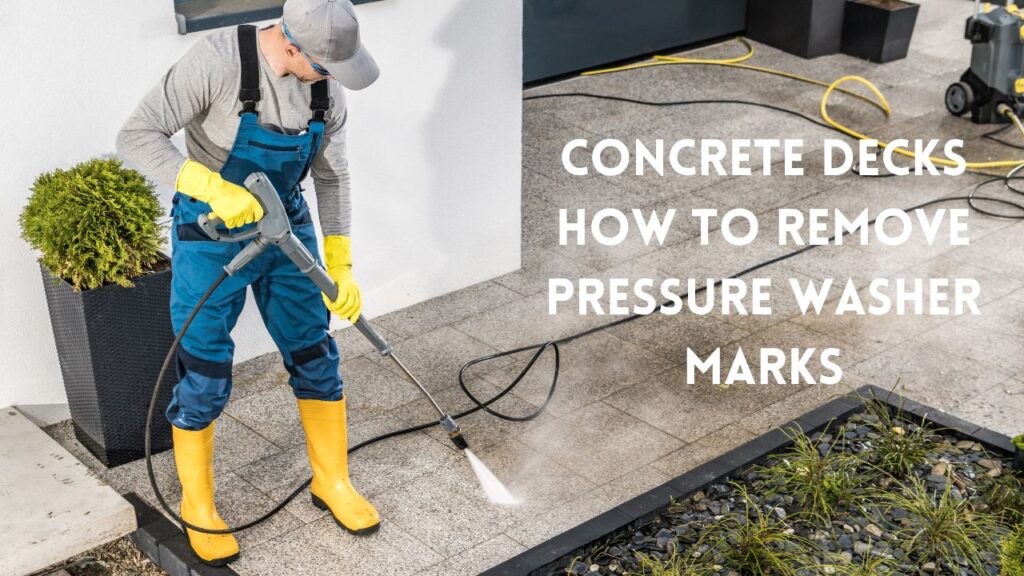
Although this may be more complex, we will explain it here. This means you should be able to do it even if you are a novice.
Use Muriatic Acid in a Process Called Acid Washing
This method, also known as acid etching, is one of the most effective methods of removing pressure washer marks from concrete decks.
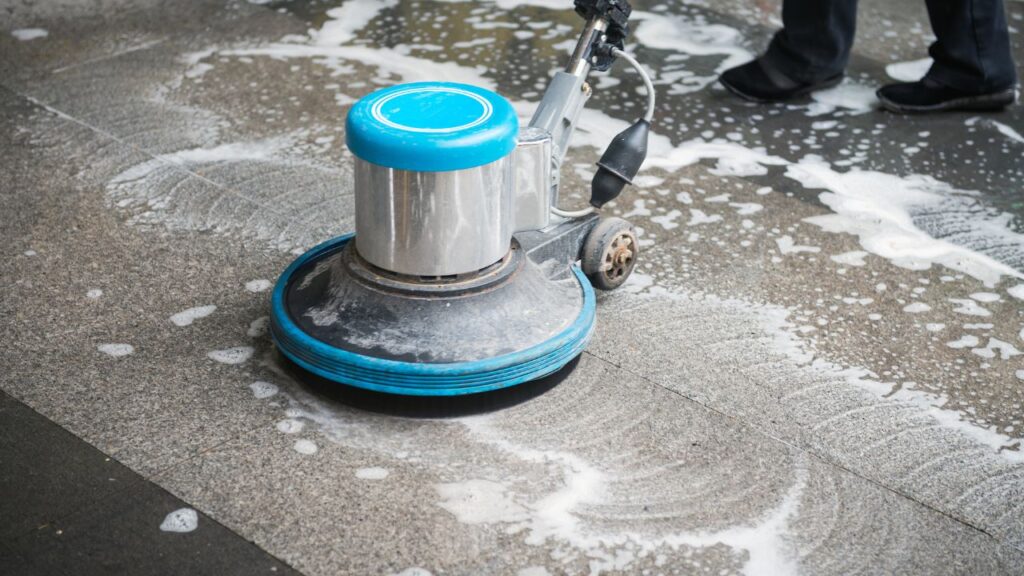
Here’s how to do it:
Caution: Muriatic acid (hydrochloric acid) produces poisonous fumes and should only be used outdoors.
Keep baking soda nearby to neutralize unnecessary spills or accidents.
- First, prepare the concrete deck by brushing, sweeping, or vacuuming. You should also remove any oil stains by using an alkali detergent.
- Avoid using trisodium phosphate (TSP) cleaner, as it may react with the muriatic acid (still to be applied) and produce harmful gases.
- Take all safety precautions, including wearing acid-resistant gloves, masks, vapor-proof goggles, etc.
- Prepare the mixture in a plastic bucket. We don’t want Jesse Pinkman and Walter White’s bathtub debacle.
- Take four parts water and 1 part acid.
- Wet the concrete deck with the solution. You may spray on some water to keep the surface damp. However, do not create puddling.
- A gallon of solution can restore around 45 square feet of area.
- Use a push brush to brush the concrete.
- Allow around 10 minutes to etch the deck fully.
- Make sure the acid doesn’t completely dry up. Keep rinsing with water as much as necessary.
- You may scrub the edges with a cup of ammonia, baking soda, and garden lime (in a gallon of water).
- Finally, hose down the acid mixture with plenty of water.
- However, ensure not to use a pressure washer this time as it will drive the acid deep into the concrete, counterintuitively leaving more pressure washer marks than before.
FAQs
How do I get rid of pressure washing lines?
To remove pressure washing lines in a wooden deck, you can start by removing any splinters or debris from the deck. Then sand the deck by using 220-grit sandpaper (for finer sanding). Apply a wood filler, if needed, and then sand the excess filler. Clean the surface again to apply a stained cover or a sealant finally.
Why did my deck turn white after pressure washing?
When too much pressure is used to wash the deck, it might turn white. In that case, the natural pigments of the wood get washed away, leaving behind a whiteish and lighter look on the deck. If your deck has turned white, apply the restoration methods discussed above.
Does pressure washing damage decks?
Yes, but only if you follow unsafe techniques, such as using too high pressure or spraying in a concentrated area for longer durations. To prevent damaging your decks, use a lower PSI, and begin pressure washing by testing on a corner of the deck. The generally recommended PSI values for pressure washing decks are 1500 to 2000 PSI – lower for softwoods and higher for hardwoods.
Does pressure washing damage pressure-treated wood?
Yes, pressure washing can damage pressure-treated wood if incorrect PSI or nozzle is used. It can also be damaged if the wrong detergent is used. So, make sure always to use the recommended PSI as well as the detergent designed specifically for your application.
Final Words
Cleaning a deck with a pressure washer is easy, but most people must learn to lessen the mistakes leading to pressure washer marks.
These mistakes can be rectified with skills and experience. Or you can take up a few good habits to ensure you are pressure washing, just like a professional.
Firstly, try not to use too much pressure; it is better to be safe than sorry. Avoid washing without a cleaning solution; cleaning solutions effectively reduce the power required to wash a deck. And finally, follow a pattern for washing instead of random cleaning.
Your two best friends are if you sustain pressure washer marks are, sanding, and stain covering.
The Project Pressure Wash team hopes this information helps you clean more confidently. Let us know what works for you. We would love to hear your story in the comments below!

